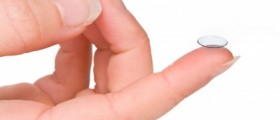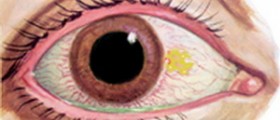
KeratoconusKeratoconus is a degenerative eye disorder that is characterized by the structural changes in the cornea. Cornea is the central part of the front surface of the eye through which we are able to see. Normally, cornea has round shape, but in keratoconus cornea becomes thin and cone shaped. This abnormal shape prevents the light that enters the eye to be correctly focused and causes distortion of vision.
Keratoconus alters vision in two ways: While cornea becomes cone shaped, the smooth surface also becomes slightly wavy (irregular astigmatism)The eye becomes nearsighted as the front of cornea expands.Causes of Keratoconus
Keratoconus often occurs due to unknown reasons. Some studies suggest that this condition may be hereditary and the incidence is greater if a family member has been affected by it. It has been noticed that people who are suffering from certain medical conditions, such as asthma, allergy and eczema, are more susceptible to keratoconus.
People with Down syndrome are usually often diagnosed with keratoconus. Vigorous eye rubbing is believed to cause keartoconus but usually there are no eye injuries or eye diseases prior to onset of keracotonus. Keratoconus is sometimes associated with overexposure to ultraviolet rays.
This condition may start from childhood to age 30 but it develops very slowly, over the years. Typically, both eyes are affected but not to the same degree. Keratoconus doesn’t lead to blindness but it causes problems with distorted and blurred vision. Eyeglasses and contact lenses can restore normal vision in people affected by this eye disease.
Diagnosis
A doctor must perform eye examination and include symptoms that a patient has mentioned. These symptoms include:Unexpected alteration of vision in one eyeDouble vision when looking with one eyeObjects seen are distorted Poor night visionCornea can be examined using the instrument called keratometer by which curvature of the cornea is measured. Also, there are computerized instruments that create three-dimensional map of the cornea. This process is known as corneal topography by which definite diagnosis is obtained. The topographical map can indicate any distortion or scarring in the cornea while keratoconus can be established by characteristic steepening of the cornea curvature.
Treatment for Keratoconus
Most people suffering from keratoconus require only eyeglasses. In case eyeglasses don’t provide proper vision, they can be replaced by rigid contact lenses. If keratoconus progresses to a point where vision correction is no longer possible, surgery may be necessary which includes, for example, corneal transplantation. Corneal transplantation is often needed when cornea becomes cloudy due to side effects of keratoconus.

















Your thoughts on this
Loading...